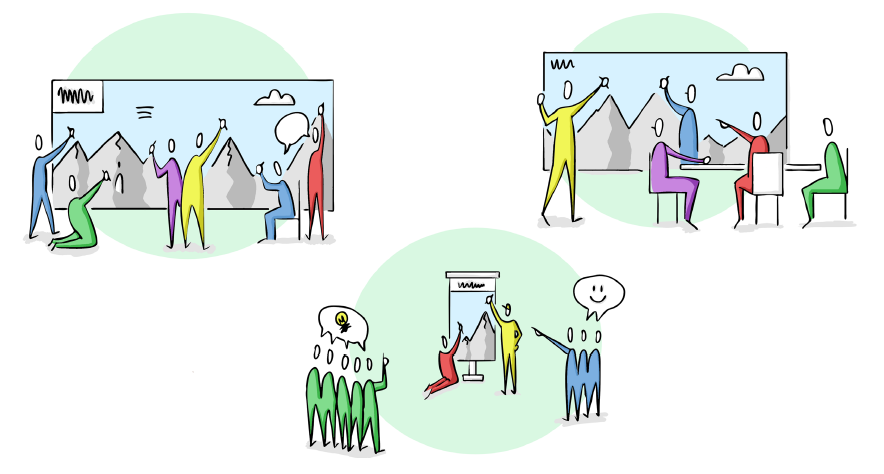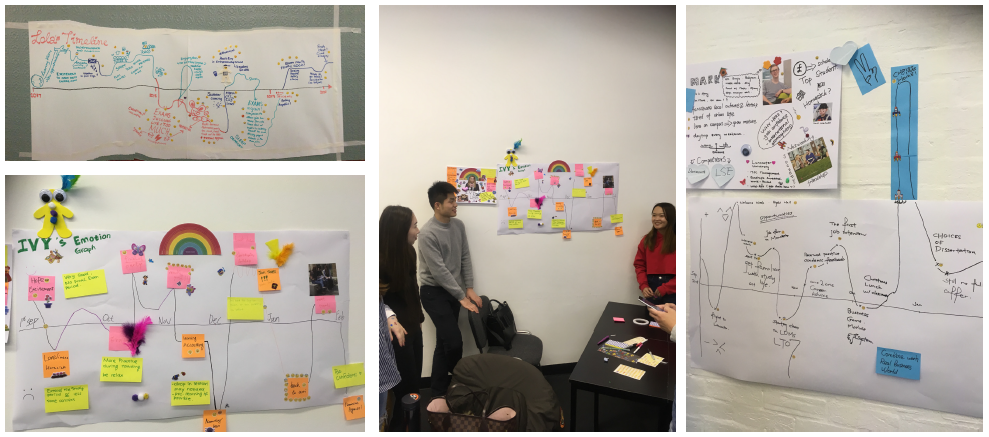
Having met your students now and learnt a bit more about them as human beings, let’s continue exploring their journey through the programme to identify the good and the ugly about their experience. You may have already noticed that service design acknowledges more than just what students say.
Taking this approach moves our enquiry below the surface and at times superficial feedback methods relying on answers to specific questions in surveys and course feedback forms. The participatory mode of enquiry outlined in this workbook brings about voices you have not heard before going much deeper into the tacit and latent knowledge. Hopefully, we have not taken you too much out of your comfort zone and you are ready to continue to our next step and complete our persona profiles with their emotional journey map through the programme capturing the ups and downs of the student experience.
The journey maps will help visualise the existing experience as an end-to-end human illustration of how the programme is perceived by your students.

Tips: As before, you may guide your questions towards more targeted enquiry. Have the programme schedule ready so that you can see what is happening when during the programme and how students remember these events. You may encourage students to write up a little quote into a speech bubble next to each point to create a story of the journey. Be genuinely interested, do not dismiss or ridicule. Be interested in what makes the good times good as well. Be interested in aspects seemingly not related to the programme, such as the weather, struggle with transport, feelings of isolation, family sad news.
The journey maps can have any timescale you will decide to focus on – one semester, one year, full three-year programme. The level of detail will depend on what time span you will decide to map.
Student groups will create a number of journey maps with ups and downs that will give you another source of information about were the main pain points are. This information will complement what you already know from your previous research and at this stage you will probably have a really good idea about the barriers and also enablers to good programme learning experience.
This service design method will remind you of the holistic nature of our lived experiences. You may quickly dismiss any mentions of the bad British weather and yes, it is true that this is outside your influence. But is there anything that you may implement in the programme to acknowledge this and lift the students (and staff) spirit? The challenge for you will be not to fall into the “well, I can’t do anything about this” mode. The next section will show you the exact opposite.
The journey maps will likely have spikes of low and high. It is not the aim to aspire make all experiences only positive. Students understand well that challenges are a part of learning.

Let’s continue with the power of 3 for now. Before we move on to the next section, let’s reflect and note down:
And finally, celebrate a small victory! You have earnt three very important badges in this section.
